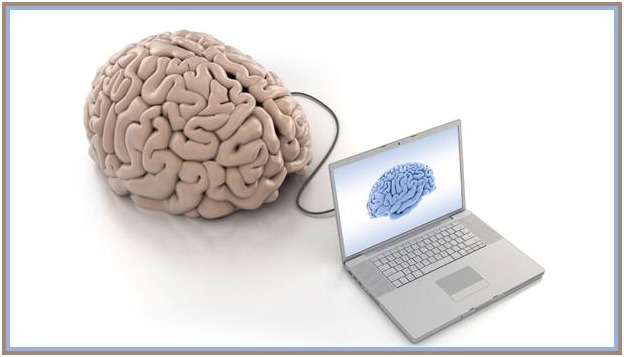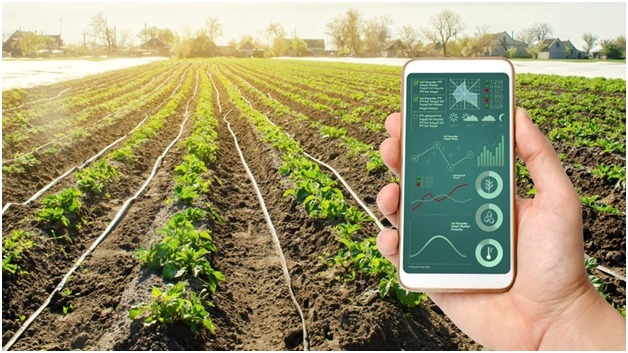
From the application of third-generation semiconductor materials, AI-driven R&D of medicines and vaccines, to automatic optimization of data management systems and data intelligence-powered agriculture, technology breakthroughs are expected to accelerate and make impacts across sectors in the economy and the society at large.
Alibaba’s DAMO Academy, the global research initiative by Alibaba Group, provides its forecast of the top 10 leading trends that will shape the tech industry in the year ahead.
Third-generation semiconductor materials, represented by gallium nitride (GaN) and silicon carbide (SiC), boast high-temperature resistance, high breakdown voltage, high frequency, high power, and high radiation resistance. In the next five years, the world will witness third-generation semiconductor materials spring up in areas such as 5G base stations, new energy vehicles, ultra-high-voltage power grids, and data centers.
In the Middle East, countries such as the UAE and KSA have already started deploying 5G networks – in line with UAE’s Vision 2021, the UAE was the first country in the Arab Region and fourth country globally to launch and use 5G networks while KSA has installed more than 5,797 5G towers across 30 cities.

The year 2020 is the first year to pass after quantum supremacy was achieved. In 2020, investors worldwide flocked to the quantum computing field, related technologies and ecosystems thrived, and numerous quantum computing platforms rose to prominence. In 2021, this trend will garner further attention from all corners of society. Quantum computing must deliver enough value to make it worthwhile. The mission in the “post-quantum-supremacy” era must be aligned across the industry: to tackle critical scientific and engineering problems through collaborative innovation and to pave the way for quantum error correction and practical utility, two milestones in quantum computing.
In recent years, groundbreaking developments in carbon-based materials have allowed flexible electronics to go far beyond their previous capabilities. For example, carbon nanotubes are now used to produce large-scale integrated circuits that deliver better performance than silicon-based circuits of the same size. Graphene, a promising carbon-based material for flexible electronics, has also been put into large-scale production.

As new AI algorithms are emerging and computing power is reaching new heights, this technology will make it easier to complete R&D of medicines and vaccines that were previously very time-consuming and costly. Compound screening, disease model generation, target identification, lead compound discovery, and lead drug optimization are some of the areas in which the technology excels. The integration will reduce repetitive work and improve R&D efficiency. The beneficiaries will be the wider public, who can enjoy better medical care and pharmaceuticals in the near future.

Brain-computer interface technology is essential for new-generation human-machine interactions and collaborative intelligence between humans and machines. This technology is the pillar and driving force of neural engineering. It analyses how the human brain works from a higher dimension. In the future, brain-computer interface technology will help control robotic arms more precisely than ever before and help patients who are fully conscious but cannot speak or move to overcome their physical limitations.
The rapid development of cloud computing and exponential growth in the amount of data have posed daunting challenges to computing task processing, storage cost control, and cluster management during traditional data processing. Manual management and tuning are unable to process massive amounts of data in diversified, complicated scenarios. Therefore, AI-based automatic optimization of data management system will inevitably be the best choice for future data processing. AI and machine learning will be adopted in a variety of fields, such as intelligent cold/hot data separation, anomaly detection, intelligent modeling, resource scheduling, parameter tuning, stress testing data generation, and index recommendation.
7. Cloud-native technologies will reshape IT systems
Long product development cycles and low R&D efficiency in traditional software development have long been a source of pain. Cloud-native architectures featuring distribution, scalability, and flexibility look to be the cure. They allow enterprises to utilize and manage their heterogeneous hardware devices and cloud computing resources more effectively. Cloud-native methodologies, toolsets, best practices, products, and techniques allow developers to focus only on creating new applications. In the future, chips, development platforms, applications, and even computers will be cloud-native. The benefits that cloud-native technologies will bring are too numerous to mention. Just to name a few, the technologies help abstract away many layers of infrastructure components such as networks, servers, and operating systems, reduce computing costs, improve technology efficiency, lower barriers to developing applications on the cloud, and expand the scope of cloud applications.

Today, new-generation digital technologies, including the Internet of Things (IoT), AI, and cloud computing, are being applied to the agriculture industry throughout the production process to retail. New-generation sensors help obtain real-time farmland data. Big data analytics and AI expedite the processing of large amounts of agricultural data. Agricultural practitioners can monitor crops, implement precision breeding, and allocate environmental resources on demand. In addition, technologies such as 5G, IoT, and blockchain are utilized to control and trace the transportation of agricultural products, ensuring their safety and reliable delivery.
9. Industrial intelligence leaps from single-point implementation to industry-wide implementation
Industrial intelligence has been mainly used to meet partial requirements because its implementation is costly and complicated, data at the supply side is isolated, and the ecosystem is immature. After the outbreak of COVID-19 in early 2020, the remarkable resilience of the digital economy drew great attention from enterprises, digital technologies developed and spread rapidly, and more investments were injected into the construction of new infrastructure. These factors helped build a picture in which we can see industrial intelligence leap from single-point implementation to industry-wide implementation. This is true particularly in manufacturing industries that have mature IT systems. The industries include automobile, consumer electronics, high-quality clothing, steel, cement, and chemical industries. Industrial intelligence will spring up in every corner and help closed-loop decision making in these industries. It will make an impact on a large scale, applying to the supply chain, production, asset management, logistics, and sales.
Smart city initiatives were first launched a decade ago and have sparked a significant improvement in city governance through digital technologies. Both UAE and KSA are some of the emerging economies that have great ambitions to transform their cities into smart ones. Smart Dubai is the government office charged with facilitating the city’s smart transformation to empower, deliver, and promote an efficient and impactful city experience for residents and visitors through technology innovation. In line with the Saudi Vision 2030 objectives, Saudi authorities have implemented a smart city project across multiple cities across the Kingdom.
When coping with the COVID-19 outbreak, a number of smart cities faced challenges. This is why intelligent operations centers are widely accepted and deployed to maximize the usage of data resources and promote global, fine-grained, and real-time governance and public services. In addition, as the Artificial Intelligence of Things (AIoT) becomes mature and widely applied and spatial computing technologies are improved, operations centers will be more intelligent. By keeping “digital twins” of cities, intelligent operations centers consider each city as a unified system and deliver city-wide services capabilities. Intelligent operations centers will become the digital infrastructure of cities in the future.